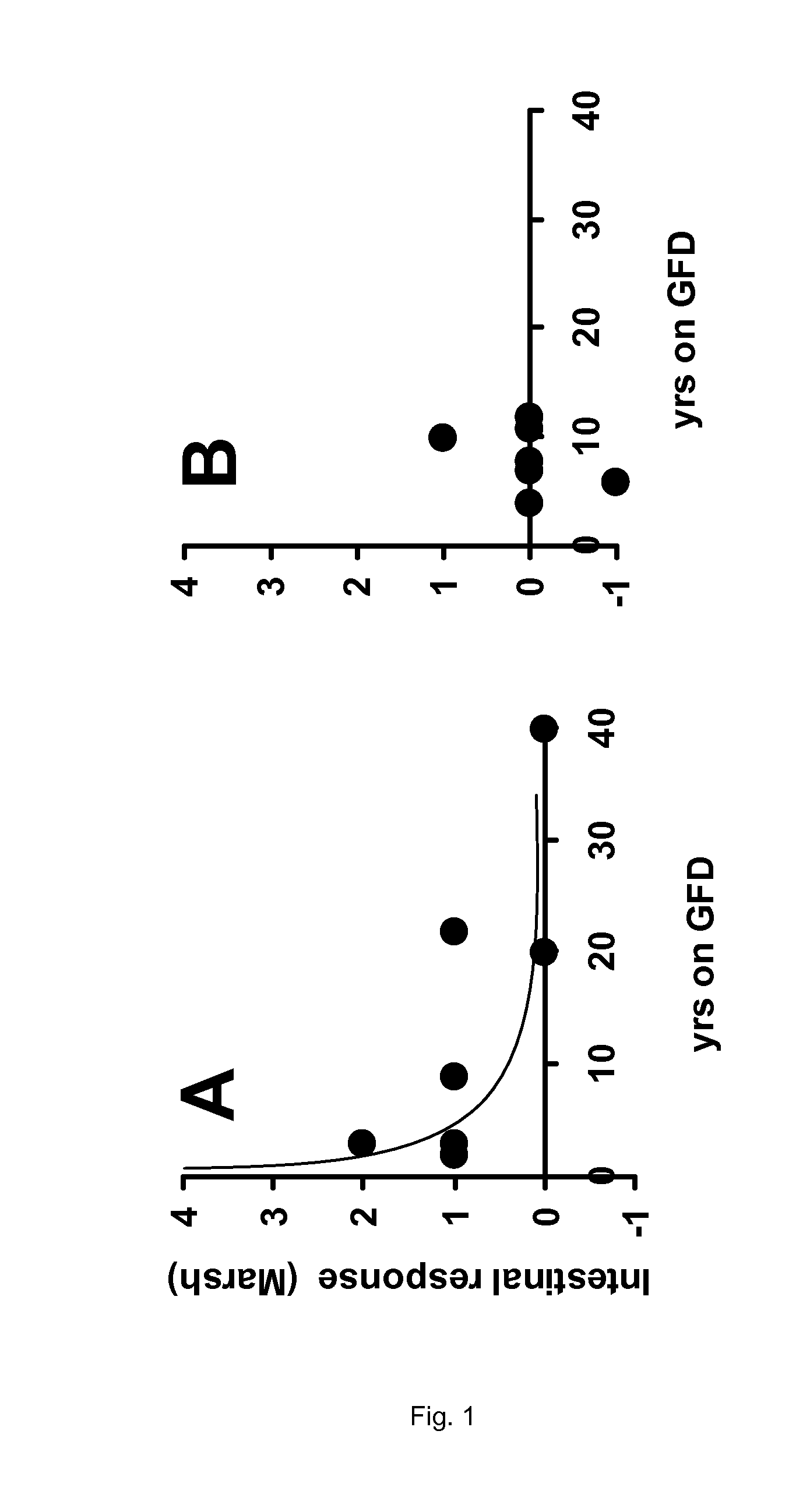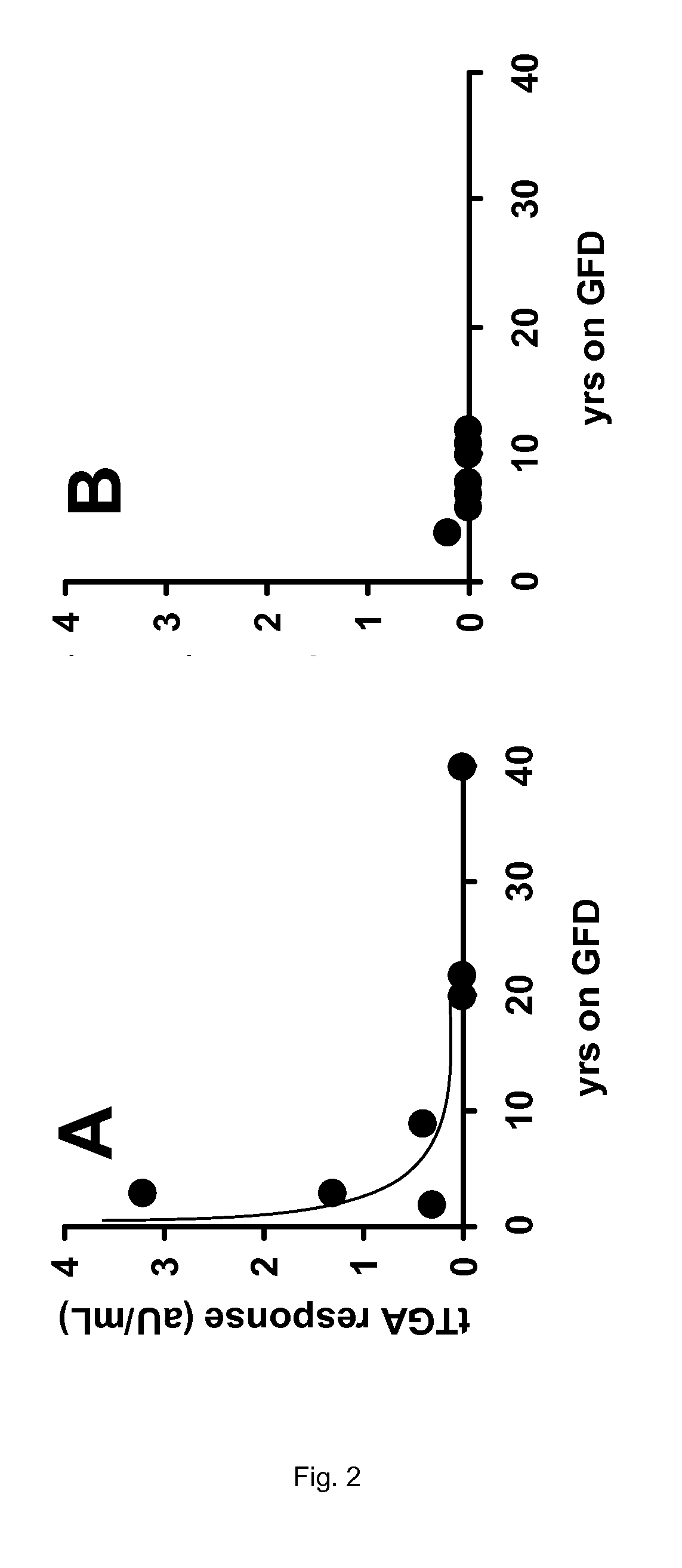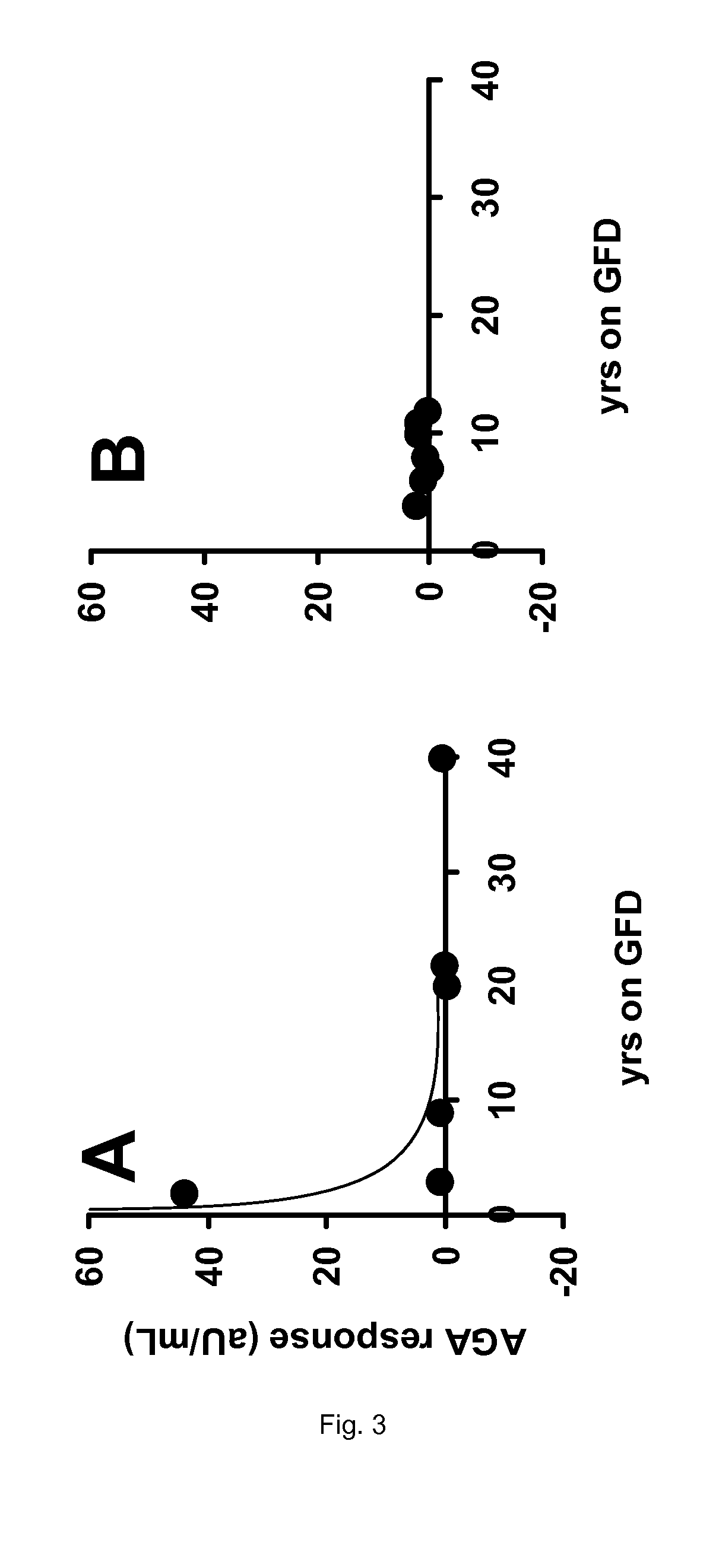Testing efficacy for celiac disease
a technology of celiac disease and testing efficacy, which is applied in the field of testing efficacy for celiac disease, can solve the problems of slow proteolytic degradation of gluten in the lumen of the human gastrointestinal tract, difficulty in complying with a gluten-free diet, and destruction of intestinal resorptive villi
- Summary
- Abstract
- Description
- Claims
- Application Information
AI Technical Summary
Benefits of technology
Problems solved by technology
Method used
Image
Examples
example 1
Enzyme Therapy and its Clinical Responses in Celiac Subjects on a Gluten Diet
[0122]Because of their unusually high content of proline, gluten molecules are poorly degraded by enzymes in the gastrointestinal tract. After ingestion, these partly degraded gluten proteins reach the small intestine. Such proline-rich protein fragments are particularly toxic to celiac patients as they will induce T-cell responses causing an inflammatory response in the small intestine.
[0123]Initial in vitro studies showed that the proline-specific endoprotease AN-PEP is highly effective in gluten molecules that are toxic to celiac patients by cleaving after the proline residues (Stepniak et al., Am. J. Physiol. Gastroenterol. Liver Physiol. 291:G621-G629, 2006). Moreover, the enzyme is stable and active under gastric conditions (Stepniak et al.). It was also shown that in vitro incubation of a digest of gluten with this AN-PEP enzyme was able to almost fully reduce immune T-cell responses to gluten (Stepn...
example 2
Relationship Between Years on Gluten-Free Diet and the Response to Gluten
[0138]From the data presented in Table 2 of Example 1, no firm conclusion could be drawn regarding the efficacy of the enzyme therapy as applied in the clinical trial. Neither the intestinal histopathology (Marsh scores), nor the celiac disease specific antibodies anti-endomysium IgA (EMA), tissue transglutaminase IgA (tTGA), anti-gliadin IgA (AGA) and IgG (AGG) show a clear response to the oral intake of the proline-specific protease. However, if the same data are presented according to the present invention, the outcome of the trial allows some firm conclusions.
TABLE 3Results of the trial described in Example 1 specifying the years thatpatients are on a gluten-free diet (GFD) in relation to the various clinicalparameters observed.MarshMarshYears on aresponse inYears on aresponse inGFDplacebo groupGFDAN-PEP group22 16−12140321103110140 08020 01209170tTGA responsetTGA responseYears on a(aU / mL) inYears on a(aU / m...
example 3
Statistical Evaluation of the Relationship Between Years on Gluten-Free Diet and the Response to Gluten
[0146]Because the clinical parameters are not normally distributed, non-parametric tests are more efficient (Hollander and Wolfe, Nonparametric Statistical Methods. New York: John Wiley & Sons, 1973). Therefore, the values were ranked to calculate statistical correlations and differences between treatment groups.
[0147]All serological (blood tTGA, AGG, AGA, and DGP-tTG antibodies) and histopathological (intestinal Marsh score) outcome parameters and of the subjects finalizing the randomization phase were ranked in order of magnitude. Observations with equal rank were assigned the average of the ranks for the range they cover. Similarly, subjects were assigned a rank number in order of years on gluten-free diet. Correlations between ranked clinical parameters and ranked years on gluten-free diet were explored using the Spearman Rank Correlation Coefficient (r) to explore the strength...
PUM
| Property | Measurement | Unit |
|---|---|---|
| Time | aaaaa | aaaaa |
| Time | aaaaa | aaaaa |
| Time | aaaaa | aaaaa |
Abstract
Description
Claims
Application Information
 Login to View More
Login to View More - R&D
- Intellectual Property
- Life Sciences
- Materials
- Tech Scout
- Unparalleled Data Quality
- Higher Quality Content
- 60% Fewer Hallucinations
Browse by: Latest US Patents, China's latest patents, Technical Efficacy Thesaurus, Application Domain, Technology Topic, Popular Technical Reports.
© 2025 PatSnap. All rights reserved.Legal|Privacy policy|Modern Slavery Act Transparency Statement|Sitemap|About US| Contact US: help@patsnap.com



